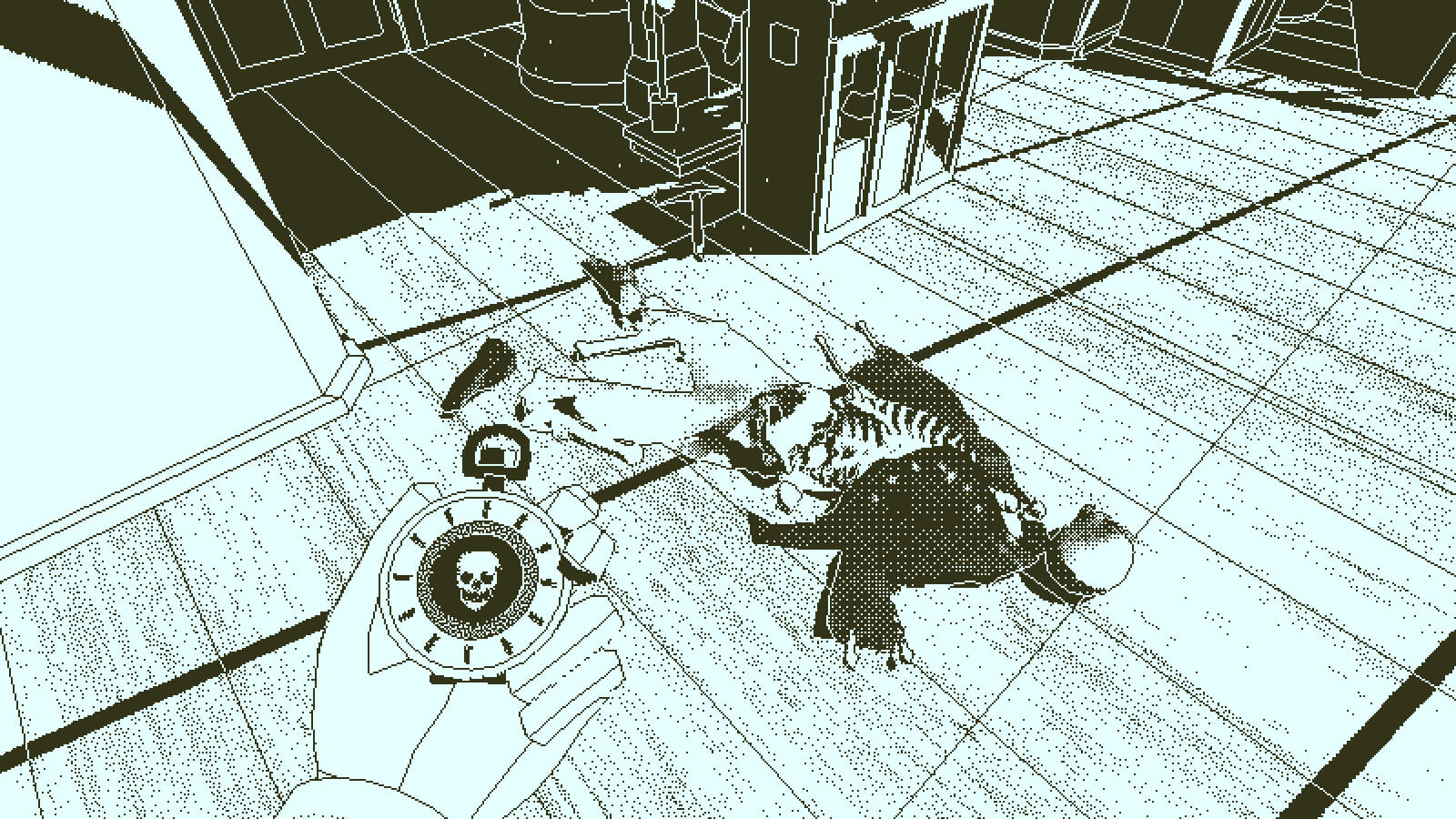Return of the Obra Dinn
published:
by Harshvardhan J. Pandit
blog personal video-games

Who doesn't like solving a murder mystery. Especially one where a mysterious ship, lost at sea for 5 years, has returned with all its crew dead. Such is the story of "Obra Dinn", and you - the chief investigator, have been tasked with finding out just what has happened onboard. For insurance purposes of course. To aid you in your task is a journal that records your findings, including how you have found the crew, what are their identities, and what may have killed them. And to do the detective work - well, there's this magical device called 'memento mortem' that lets you visually see the moment of death.

The gameplay is fantastic. Well polished, creative, fun. The most striking bit (pun intended) of course is the graphics - it is a 3d environment drawn entirely in 1-bit pallettes. Think of the screens of yore when monitors were not capable of displaying any color - not even grayscale. The options menu even offers simulating several of the old monitors - from Macintoshes to IBMs and Commodores. The graphics are excellent and never really 'break down'. The immersive experience of being on the ship and finding things is rewarding. Goes to show that games don't need real-life mimicking visuals to be good.
The game itself is a mystery thriller - you have to find out what happened to the ship in a non-linear fashion. Find a corpse, find out what killed it using the memento mortem, and then you will find more corpses around it. Repeat. Use the journal to note down your findings and the story should become clear. What is really enjoyable in the game though is that things are left to your own speed and convenience - there is no rush, nothing stopping you from taking any particular direction first, or to guide you on a 'point and click' adventure. While there are guardrails at key points, they serve the task of introducing you to features rather than shepherding you. In the end, the game is really about experiencing the different stories, thinking about them to guess what happened, and then letting the game take its own course. The journal is set up to guide you in this, and it does an excellent job.

The creator of the game, Lucas Pope is also the developer of the genre-defining Papers, Please game. The sheer creativity and care that both games show is amazing, both to witness and to experience. So if you have a couple of hours you want to spend over a day or two such as the weekend - you should check this game out. I won't spoil much, but there is an innate joy in experiencing the rush of finding for yourself all the crazy stuff the ship's adventures included, and to piece together all of the story at the very end.